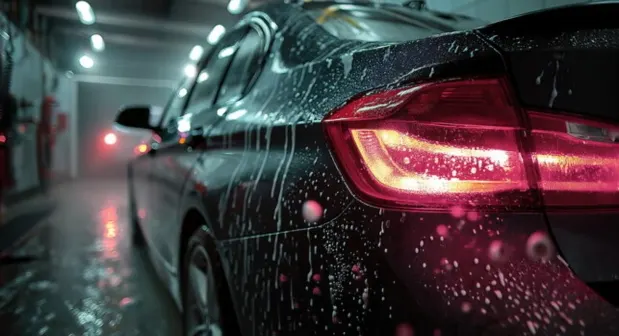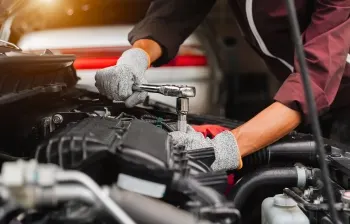


When it comes to protecting your vehicle's paint and keeping it looking showroom-fresh, two names dominate the conversation: ceramic coating and traditional wax. Both promise enhanced gloss, protection from the elements, and easier maintenance—but they differ dramatically in performance, cost, and upkeep. In this post, we'll explore:
What ceramic coating and traditional wax are
Key benefits & drawbacks of each
Cost comparison
Maintenance requirements
Which solution best fits your needs
Traditional car wax—often made from carnauba or synthetic polymers—has been the go-to for decades:
Composition: Natural (carnauba) or synthetic blends
Protection: Forms a thin, sacrificial layer that repels water, dirt, and UV rays
Lifespan: 4–8 weeks (depending on product quality & climate)
Appearance: Warm, deep gloss
Affordable upfront cost (typically $15–$30 per bottle)
Easy DIY application—apply by hand or dual-action polisher
Instant, rich shine
Short-lived protection—requires reapplication every 1–2 months
Labor-intensive for large vehicles
Less chemical resistance—weaker barrier against bird droppings, road salt, acid rain
Ceramic coating uses advanced silicon dioxide (SiO₂) or titanium dioxide (TiO₂) polymers to bond with your car's clear coat:
Composition: Nano-ceramic particles suspended in a liquid resin
Protection: Creates a semi-permanent, hydrophobic layer
Lifespan: 2–5 years (professional grade), 6–12 months (DIY kits)
Appearance: Mirror-like gloss and depth
Long-term protection—lasts years versus weeks
Hydrophobic properties—water beads up and rolls off
UV & chemical resistance—better defense against contaminants
Easier maintenance—simple washing vs. frequent re-waxes
Higher upfront cost ($300–$1,200 for professional application)
Complex application—surface prep is critical (clay‐bar, polishing)
Not scratch-proof—only resists light swirls
May require annual "boosters" to maintain peak performance
| Factor | Traditional Wax | Ceramic Coating (Pro Grade) |
|---|---|---|
| Product Cost | $15–$30 per bottle | $50–$150 per DIY kit |
| Professional Application | $50–$100 per vehicle | $300–$1,200 per vehicle |
| Reapplication Frequency | Every 1–2 months | Every 2–5 years |
| Annualized Cost | $300–$600 / year | $60–$240 / year* |
*Based on $600 up-front premium coating lasting 5 years = $120/year
Wash with pH-neutral soap every 1–2 weeks.
Dry thoroughly to prevent water spots.
Reapply wax every 1–8 weeks.
Gentle wash with a dedicated ceramic-safe shampoo.
Inspect hydrophobic performance—look for bead-up.
Apply ceramic boost spray every 6–12 months (optional).
| Criteria | Choose Traditional Wax | Choose Ceramic Coating |
|---|---|---|
| Budget-conscious | ✔ Lower upfront cost | ✘ Higher initial investment |
| Quick DIY | ✔ Easy application | ✘ Requires meticulous prep |
| Long-term protection | ✘ Short lifespan | ✔ Lasts multiple years |
| Low maintenance | ✘ Frequent reapplications | ✔ Simple washes |
| Maximum gloss & depth | ✔ Rich warm glow | ✔ Ultra-deep, mirror-like finish |
If you love weekend DIY projects and don't mind reapplying wax every few weeks, traditional wax delivers great shine at low cost.
If you want head-turning gloss with minimal upkeep, and you're willing to invest upfront, ceramic coating is the winner. Its hydrophobic properties keep dirt, bird droppings, and light contaminants at bay—saving you time and effort over years.
Prep is everything: Always start with a full wash, decontamination (clay-bar), and polish before coating or waxing.
Work in the shade: Avoid direct sunlight to prevent streaks and water spots.
Follow cure times: Ceramic coatings need 24–48 hours to bond fully—limit exposure to moisture during this window.
Use quality tools: Microfiber applicators, premium microfiber towels, and pH-neutral soaps make a big difference.